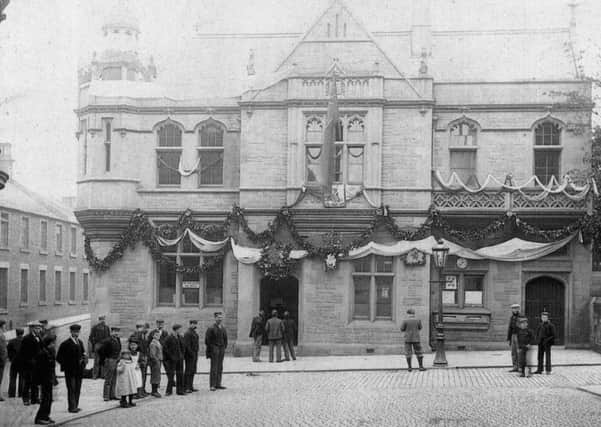A red letter day for the Post Office in Falkirk


It is a big square 1960s building with hardly a redeeming feature and well past its sell-by date after around 50 years. It does however have its place in the history of the post in the town which dates back at least four centuries.
In those days ‘‘runners’’ carried letters on foot from the major cities and the vast majority of the population would neither send nor receive a letter in their lives.
Advertisement
Hide AdAdvertisement
Hide AdIn the 17th century, wealthy individuals and businessmen were served by these hardy individuals who would leave Edinburgh for Glasgow stopping overnight in Falkirk and taking two days to cover the 48 miles on rough and dangerous roads.
If they made it safely to the town the local post would be left with an agent who was most often a local lawyer or bank agent. It was then up to the addressee to come and collect his mail.
More than a few times the runner was attacked and robbed on his hazardous journey and sometimes the runner ‘‘did a runner’’ himself especially if there was cash in the bag.
One account in 1737 talks about “James Johnston, the post betwixt Glasgow and Falkirk who was robbed and wounded by which wound he died”.
Advertisement
Hide AdAdvertisement
Hide AdThe authorities recorded a payment of nine guineas (£9 9 shillings) “to his wife for burying him”.
Falkirk’s first official ‘‘post office’’ opened in 1689 probably in Bank Street and by the mid 1700s it was on the south side of the High Street opposite the steeple.
Thereafter, it moved to Baxter’s Wynd, entered from what was called Post Office Close, and later to King’s Court where the postmaster was the Henry Salmon the bank manager and former Provost whose fall from grace I wrote about in a previous article.
By the middle of the 19th century it was in lower Newmarket Street and things had improved with regular stage coaches and horse posts from Edinburgh to both Glasgow and Stirling.
Advertisement
Hide AdAdvertisement
Hide AdOnce the mail reached Falkirk it was still carried by foot runners to a number of Receiving Houses (the future sub post offices) in Camelon, Carron, Grahamston, Larbert, Laurieston and Polmont.
Foundries, factories and wealthy individuals would send employees each day to pick up and deliver their mail though the mighty Carron Company was allowed to collect and deliver four times a day.
Later on the runners began to call in at mansion houses and big companies on their way from head office and the modern system began to emerge.
The arrival of the railways from the 1840s and later motor cycles and vans helped the service cope with a massive increase in business and by the end of the 19th century the authorities in Falkirk decided that they needed a grand new head post office.
Advertisement
Hide AdAdvertisement
Hide AdThe result was the fantastic building in Vicar Street which opened on October 30, 1893, close to the railway station.
With its amazing concoction of styles and features, as well as a menagerie of lions and unicorns on the roof, it remains one of the town’s landmark buildings. It has survived the departure of the postal service and today is part of the very successful Hub and home to Finnegan’s Cafe.
Vicar Street served until 1971 when the Garrison Place building began its five decades of service.
Now the next leg of the postal journey takes us to the Howgate not far from where it all began.